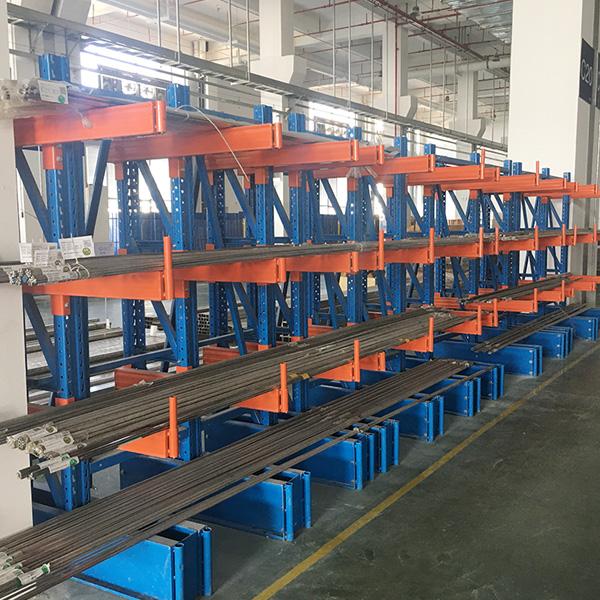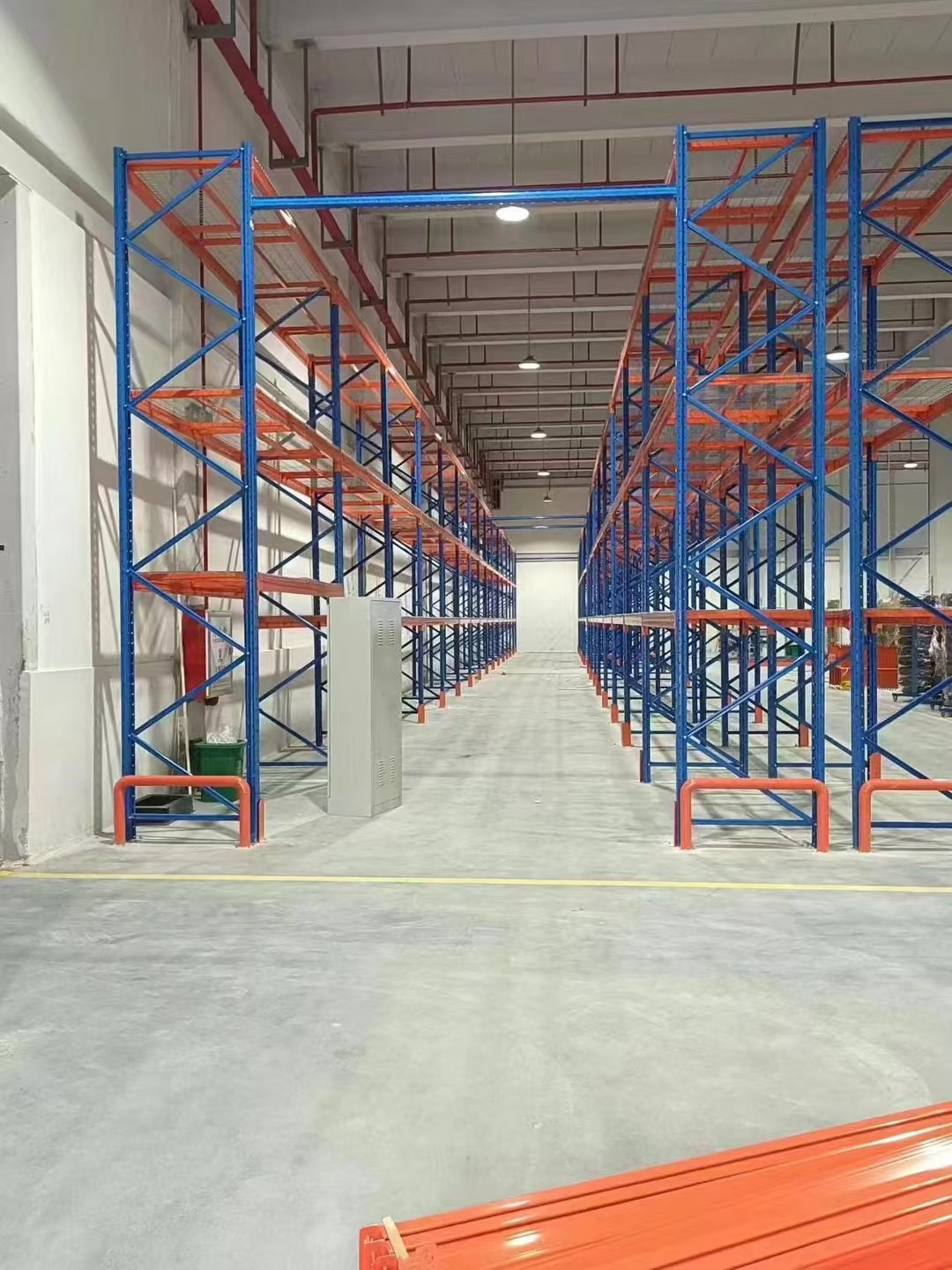In the demanding world of warehousing, manufacturing, retail backrooms, and even robust home garages, efficient and reliable storage isn't just a convenience – it's a necessity. When standard shelving buckles under pressure, heavy duty rack systems emerge as the undisputed champions of organization and load-bearing capacity. Whether you're searching for "heavy duty racking" for palletized goods, versatile "heavy duty rack shelving" for bins and boxes, exploring comprehensive "heavy duty racking system" options, or urgently seeking "heavy duty rack near me" for immediate solutions and "heavy duty rack for sale" deals, this comprehensive guide is your roadmap. We'll delve into the types, benefits, applications, and crucial buying considerations to help you select and source the perfect industrial-strength storage solution.

At its core, a heavy duty rack is designed to handle significantly larger loads than standard shelving units. Think thousands of pounds per shelf level, not hundreds. These systems are engineered from high-grade materials – typically structural steel or reinforced tubular steel – and feature robust designs that prioritize safety, durability, and adaptability. The terminology often overlaps:
Heavy Duty Racking: This frequently refers to larger systems designed for pallet storage, like selective pallet racking or drive-in racking, utilizing upright frames and beams.
Heavy Duty Rack Shelving: This often describes versatile shelving units with decks (particle board, steel, wire mesh) designed to hold heavy bins, boxes, tools, or equipment directly on the shelves. Think boltless or welded shelving with high weight capacities.
Heavy Duty Racking System: This is the umbrella term encompassing the entire integrated solution – the upright frames, beams, braces, decking, safety accessories, and sometimes even the layout design and installation. It implies a cohesive, engineered approach.
Choosing a heavy duty racking system over lighter alternatives delivers substantial operational advantages:
Unmatched Load Capacity: The defining feature. Safely store pallets weighing tons, massive equipment, dense inventory, or bulky items without risk of collapse. Capacities often range from 1,000 lbs to 20,000+ lbs per shelf level.
Maximized Vertical Space: Efficiently utilize your facility's cubic footage. Tall heavy duty rack systems allow stacking goods high, freeing up valuable floor space for operations.
Enhanced Organization & Accessibility: Structured systems create designated locations for everything. Selective pallet racking offers direct access to every pallet, while well-organized heavy duty rack shelving makes picking smaller items faster.
Superior Durability & Longevity: Constructed from high-tensile steel with robust connections (welded or bolted), these racks withstand constant heavy use, impacts, and harsh industrial environments, offering an excellent return on investment over decades.
Improved Safety: Engineered to strict standards (like RMI in the US), proper heavy duty racking significantly reduces the risk of accidental collapse compared to overloaded, inadequate shelving. Features like load beams, safety pins, and column guards enhance stability.
Adaptability & Scalability: Most heavy duty racking systems are modular. You can easily reconfigure shelf heights, add more bays, or expand the system as your storage needs evolve, without replacing the entire setup.
Optimized Workflow: Efficient storage directly translates to smoother receiving, put-away, picking, packing, and shipping processes.

The "best" heavy duty rack depends entirely on your specific application, items stored, and space constraints. Let's explore the most prevalent types:
Selective Pallet Racking (Heavy Duty Racking):
Description: The most common warehouse heavy duty racking system. Features upright frames connected by horizontal load beams. Pallets are stored side-by-side and accessed from an aisle using forklifts.
Best For: High SKU count environments requiring direct access to every pallet. Ideal for FIFO (First-In, First-Out) inventory management.
Load Capacity: High (Per beam pair: typically 3,000 lbs to 20,000+ lbs).
Accessibility: Excellent (100% selectivity).
Space Efficiency: Moderate (Requires wider aisles for forklifts).
Drive-In/Drive-Thru Racking (Heavy Duty Racking System):
Description: A high-density heavy duty racking system where pallets are stored on rails in multiple rows deep. Forklifts drive directly into the rack structure lanes.
Best For: Storing large quantities of the same SKU (LIFO or FIFO with Drive-Thru). Excellent for cold storage or bulk goods.
Load Capacity: Very High.
Accessibility: Lower (Limited to last-in pallet in LIFO).
Space Efficiency: Very High (Minimizes aisle space).
Push Back Racking (Advanced Heavy Duty Racking System):
Description: Utilizes inclined carts on nested rails. When a new pallet is loaded, it pushes the previous pallet(s) back. Retrieval is LIFO.
Best For: Medium to high-density storage for multiple SKUs but in dedicated lanes. Good balance between density and selectivity.
Load Capacity: High.
Accessibility: Medium (LIFO per lane).
Space Efficiency: High.
Boltless Rivet Shelving (Heavy Duty Rack Shelving):
Description: Extremely popular and versatile heavy duty rack shelving. Components (uprights, beams, decks) connect via rivets or clips without nuts and bolts. Easy to assemble and reconfigure.
Best For: Storing bins, boxes, tools, parts, files, equipment in warehouses, workshops, stockrooms, garages. Wide range of shelf depth/height options.
Load Capacity: High (Per shelf: Often 1,000 lbs to 5,000+ lbs depending on gauge/size).
Accessibility: Excellent.
Space Efficiency: Good to Very Good (Can be configured tightly).
Welded Steel Shelving (Heavy Duty Rack Shelving):
Description: Constructed from welded steel frames and supports. Often features reinforced braces and thicker gauge steel than boltless. Extremely rigid and robust.
Best For: Applications demanding maximum rigidity and the highest possible load capacities per shelf (e.g., engine blocks, heavy machinery parts, dense inventory). Often used with wire decking.
Load Capacity: Very High to Extreme (Per shelf: Often 5,000 lbs to 15,000+ lbs).
Accessibility: Excellent.
Space Efficiency: Good.
Cantilever Racking (Specialized Heavy Duty Racking):
Description: Features sturdy vertical columns with arms extending horizontally. No front columns obstruct access.
Best For: Storing long, bulky, or awkward items like lumber, pipes, furniture, rolls, sheet metal, carpets.
Load Capacity: High (Per arm: Varies greatly based on length/material).
Accessibility: Excellent.
Space Efficiency: Good for long items.
Selecting the optimal heavy duty racking system or heavy duty rack shelving requires careful analysis:
Assess Your Load: This is paramount.
Weight per Pallet/Shelf: Determine the maximum weight each storage location needs to hold. Don't forget dynamic loading (impact during placement). Choose a system rated above your maximum requirement.
Item Dimensions & Shape: Size, shape, and stability (e.g., need pallets? bins?) dictate shelf depth, beam length, and deck type (solid, wire, particle board).
Evaluate Your Space:
Available Floor Area & Ceiling Height: Dictates the footprint and height potential of your heavy duty rack.
Aisle Width: Forklift type (conventional, reach, narrow-aisle) determines minimum aisle width for pallet racking systems.
Floor Condition: Levelness and load-bearing capacity are crucial for safety.
Define Your Inventory & Access Needs:
SKU Count & Variety: High SKU count favors selective racking; large quantities of few SKUs favor drive-in or push back.
Inventory Turnover (FIFO/LIFO): Critical for choosing between selective (FIFO), drive-in (LIFO/FIFO), push back (LIFO).
Picking Frequency & Methods: Manual picking from shelves vs. full-pallet retrieval impacts design.
Consider Environmental Factors:
Corrosion: Environments like cold storage, food processing, or chemicals require galvanized or powder-coated heavy duty racking.
Cleanliness: Wire mesh decking facilitates cleaning and airflow (good for food/pharma).
Safety & Compliance: Ensure any heavy duty racking system meets relevant industry standards (e.g., RMI - ANSI MH16.1 in the US). Factor in safety accessories like column guards, end-of-aisle protectors, rack safety nets, and proper anchoring.
The urgency of needing a "heavy duty rack near me" often arises during expansion, reorganization, or replacing failed equipment. Simultaneously, savvy buyers constantly search for the best "heavy duty rack for sale" opportunities. Here's how to approach sourcing:
Local Industrial Suppliers & Distributors:
Pros: Physical location for viewing samples, faster local delivery, potential for on-site consultation/measurement, easier handling of installation or service calls. Ideal for "heavy duty rack near me" needs.
Cons: May have higher prices than online-only or large national players; selection might be limited compared to massive online catalogs.
How to Find: Search "heavy duty racking near me", "industrial shelving suppliers [Your City]", "material handling equipment [Your Area]". Check directories like Thomasnet.
Major Online Retailers & Direct Manufacturers:
Pros: Vast selection, competitive pricing ("heavy duty rack for sale" deals are common), detailed specifications and images online, nationwide shipping. Great for comparing options.
Cons: Shipping costs for bulky/heavy items can be high; no local showroom; potential challenges with complex installation support; longer lead times possible.
How to Find: Search "heavy duty racking system online", "buy heavy duty shelving", "industrial